
Scroll below to experience a visual telling of Kansas City Ballet’s history starting with the early years. We will unveil new sections over the upcoming months. Scroll down to see the various moments.


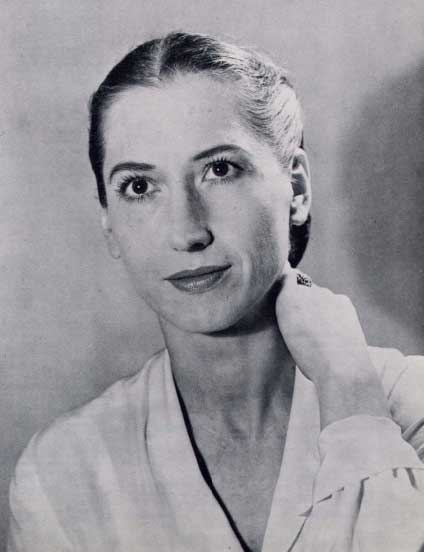
In 1957, Tatiana Dokoudovska starts the company at the Carriage House next to the old brick Conservatory building (the old Grant Hall)
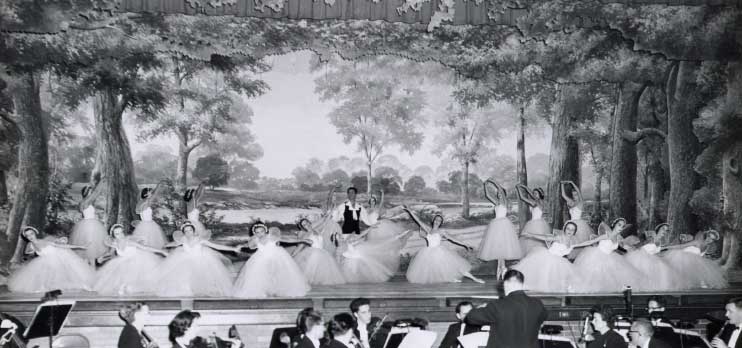
On April 30, 1957, the company gives its premiere performance at the Victoria Theater (now the Lyric) with Artistic Director Tatiana Dokoudovska. The program includes two ballets: Michel Fokine’s original Les Sylphides, and Ruse d’Amour, an adaptation by Miss Tania of Fokine’s The Toys.
In December of 1957, the Kansas City Ballet Company becomes a 501(c)(3) not-for-profit organization, and includes a board of directors, business manager, and musical director.
In the 1958-1959 season, company name changed to Kansas City Civic Ballet.
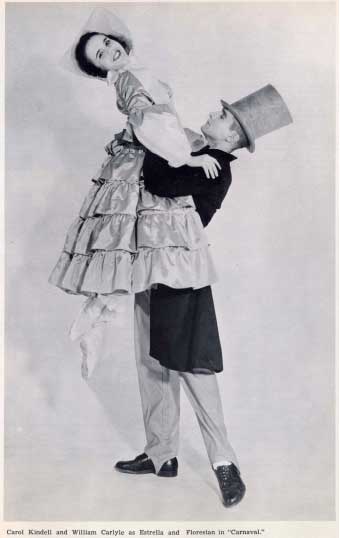
The company moves to a small place on 45th street near the Nelson Atkins Museum in 1963.
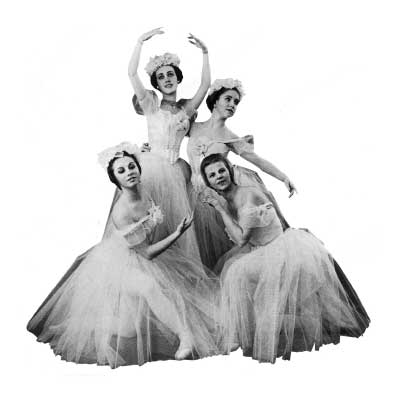
In 1966, Nathalie Krassovska is first well-known guest artist and sets Anton Dolins’ Pas de Quatre.
For the company’s 10th anniversary in 1967, they perform at the Music Hall featuring three guest choreographers.
In 1967, the Womens Committee forms – later to become the Ballet Guild.
In 1968, the company moves to Treadway Hall on the UMKC Campus.
Guest Director and Choreographer Zachary Solov create entire evening with three world premiere ballets in 1968.
In 1968, Elizabeth Hard chairs first Ballet Ball.
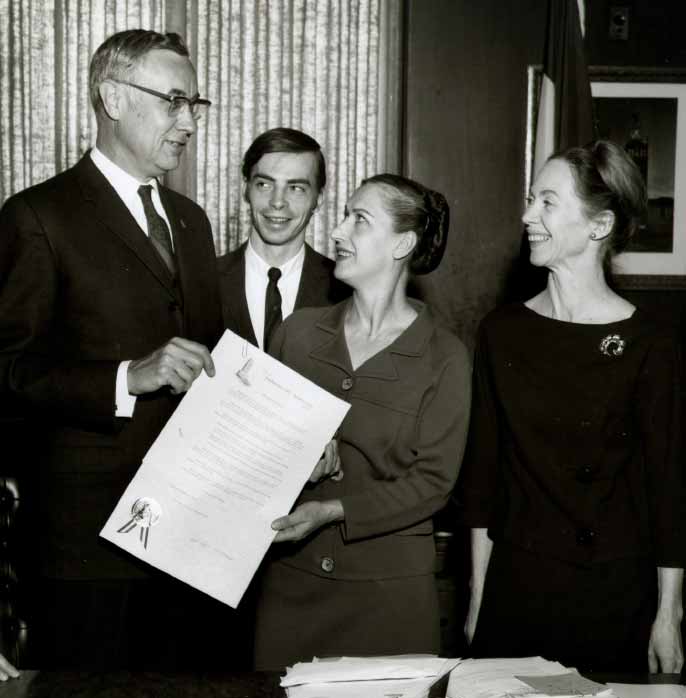
The mayor of Kansas City proclaims a special “Civic Ballet Week” in 1970
During the 1970-1971 season, the company name changed to Kansas City Ballet.
In 1972, the ballet hosts the first Festival of the Mid-States Regional Ballet Association, with companies from 11 states gathering to take class, audition, and share their work at the Music Hall in Concert and Gala Performances.
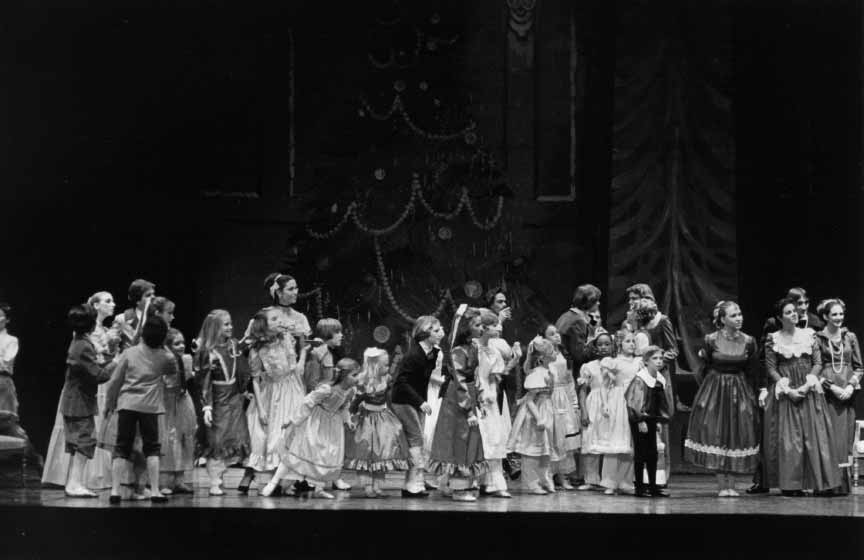
In December 1972, KCB performs first Nutcracker.
Lyric Theatre designated as season performance home in 1975.
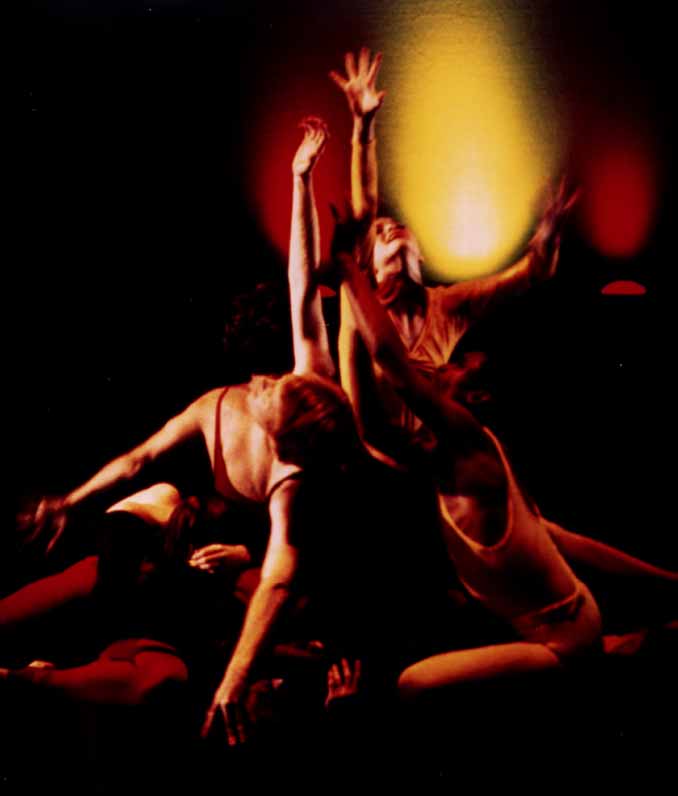
In 1975-1976, fall performance added to annual Nutcracker production and spring production for a three show season.
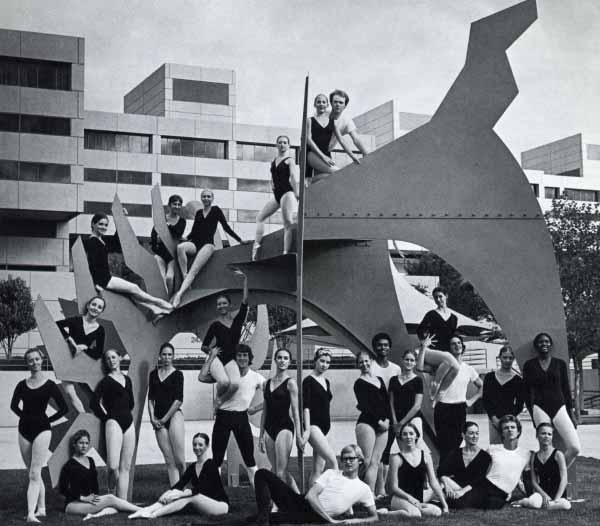
Implemented first sale of subscription series season tickets during 1975-1976 season.
In 1976, Miss Tania steps down as artistic director of the Ballet so she can devote her time to teaching and continue her position as head of the ballet department at the Conservatory of Music
Eric Hyrst is artistic director 1976-1978.
In 1976, KCB qualifies as member of the National Endowment for the Arts Dance Touring Program.
In 1977, the company moves to the Prescott Firehouse in Kansas City, KS - upstairs room with fire pole in the corner.
In April 1977 New York City Ballet dancer Patricia McBride performs her first full-length production of Giselle with KCB.
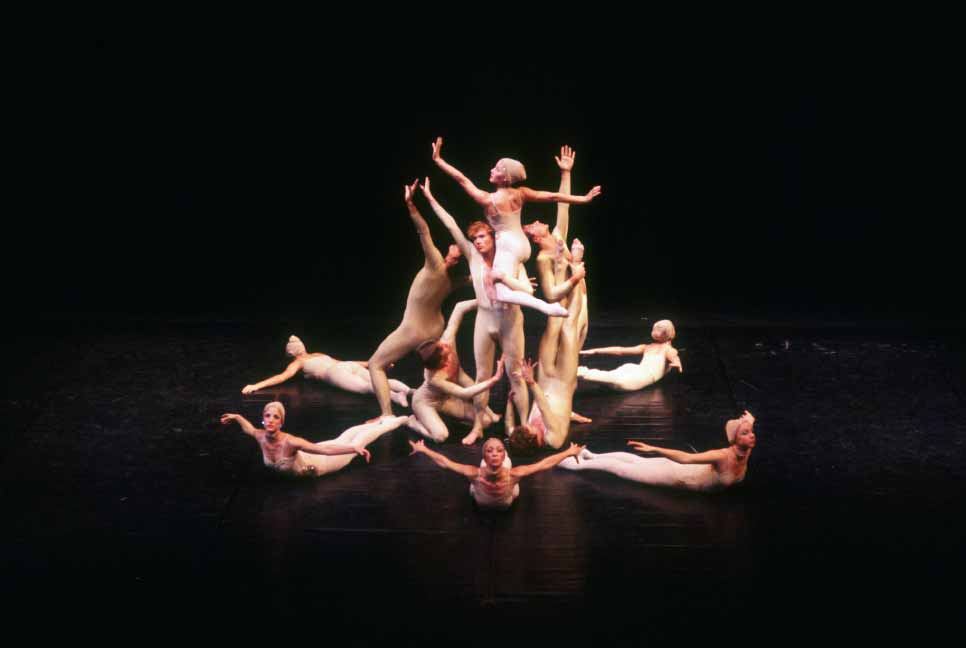
In 1977-1978, a season of four productions, including Fall, Nutcracker and two Spring Shows, performed at the Performing Arts Center in KCK.
Ronald M. Sequoio is artistic director 1978-1980.
In 1979, the company moves to a warehouse under the Broadway Bridge at 3rd and Broadway.
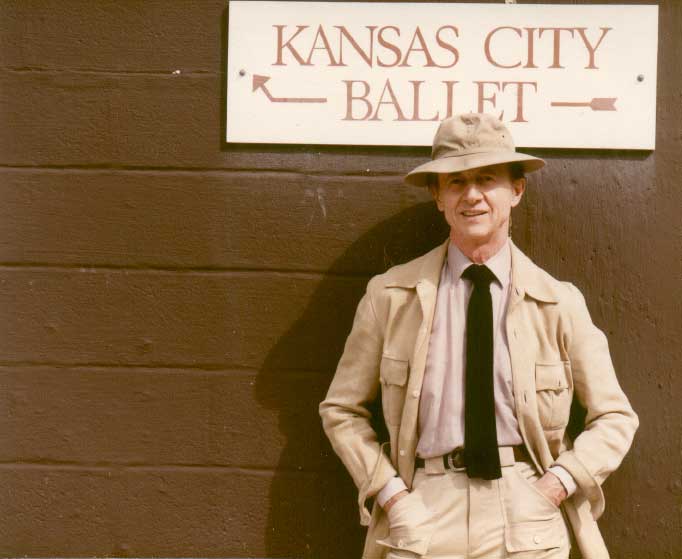
January 1981, Todd Bolender accepts the artistic directorship of the new Kansas City Ballet and the company debuts at the Music Hall on May 29, 1981. The program includes two Bolender ballets, both created for NYCB in 1955: The Still Point and Souvenirs.
In 1981, the company moves to the Westport Allen Center.
Fall of 1981, official school of the KCB is founded by Todd Bolender and he hires long-time associate Una Kai as ballet mistress.
For Fall Performance in 1981, Bolender choreographs Classical Symphony and Tchaikovsky Suite. The latter features students from his new school under the direction of Jonathan Watts.
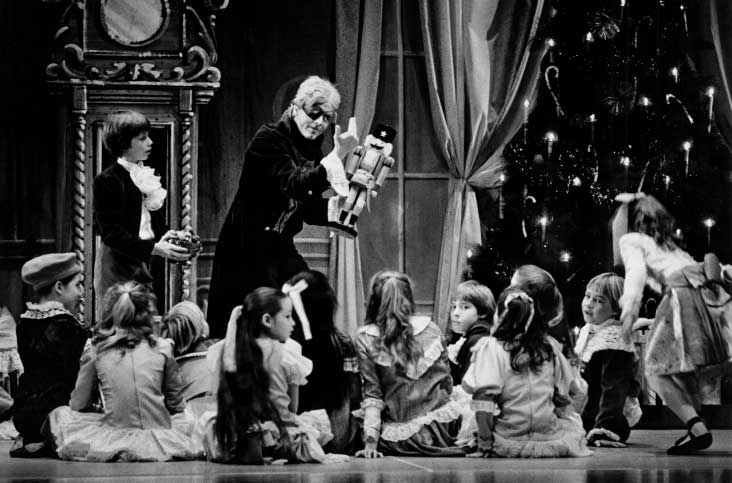
December 1981, Mr. Bolender’s first full-length ballet for the company establishes one of the most cherished holiday traditions in the region: Nutcracker premieres to full houses.
In 1982, Todd Bolender salutes his mentor, George Balanchine, by presenting a Balanchine Festival.
Kevin Amey joins KCB as company manager in February 1983.
In 1983, Diana Adams, NYCB principal dancer and later school director there, comes to Kansas City to direct the Kansas City Ballet School.
During the 1983-84 season, the company increases its performance season with 25 tour dates in five states: Arkansas, Kansas, Missouri, Nebraska, and Wyoming.
In 1984, Bolender choreographs Voyager, a collaboration with internationally acclaimed Kansas City sculptor Dale Eldred to music by Leonard Bernstein.
In 1986, the board announces the Kansas City Ballet will henceforth become the “State Ballet of Missouri” and establishes partnership with Dance St. Louis.

By 1987, KCB debuts in New York with four Bolender ballets – Souvenirs, The Still Point, Classical Symphony and Concerto in F.
In 1987, Mr. Bolender invites Stanley Zompakos to be ballet master.
Claudette Donlon joins KCB as general manager in 1987.
In 1987, Victoria Fedine is appointed school director.
Alvin Ailey Coaches his ballet The River to KCB – the company’s first Ailey work in 1988.
During 1990-1996, KCB presents additional performances at Johnson County Community College with St. Joseph Symphony.
In 1988, American Ballet Theatre’s Clark Tippett stages Clark Tippet’s Enough Said.
Martin Cohen joins KCB as executive director in 1989.
In 1989, KCB premieres Todd Bolender’s Celebration.
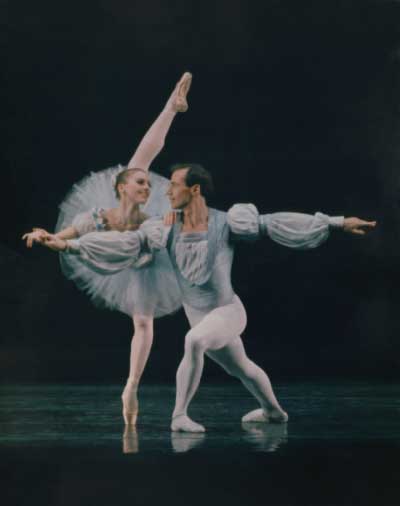
In 1991, KCB premieres first work by Antony Tudor, Lilac Garden.
Mr. Bolender invites James Jordan to return to KCB as ballet master in 1991.
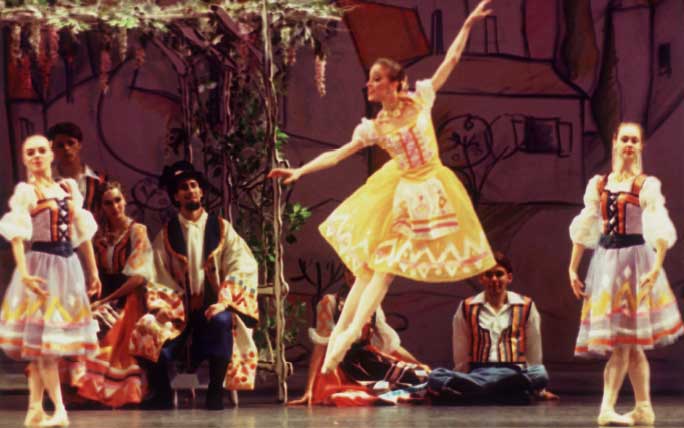
Bolender choreographs Coppelia in spring of 1993.
In 1994, Muriel Kauffman, board chairman 1990-92, gives an endowment of $1 million for Kansas City Ballet, making KCB one of only four arts organizations in the area to receive this honor.
In 1994, Nutcracker scene sets redesigned by Robert Fletcher (artist/designer).
Una Kai retires as ballet mistress in 1994.
In fall 1995, Todd Bolender choreographs a Tribute to Muriel in memory of Muriel McBrien Kauffman.
In 1995, Mr. Bolender retires, at age 81, from artistic directorship to become artistic director emeritus.

In 1996, Mr. Bolender choreographs and premieres his last new work, Arena, commissioned by a “Meet the Composer” grant with James Mobberley, composition professor at the UMKC Conservatory and composer-in-residence with the Kansas City Symphony.
In 1996 William Whitener is selected as the new KCB artistic director.
In the spring of 1997, Whitener’s, The Scarlatti Dances, opens to rave reviews.
Jeffrey J. Bentley joins KCB as executive director in 1998.
A full time community outreach director position is created the fall of 1997.
In the spring of 1998 Whitener’s premieres two new works: Songs in the Open Air and Midsummer Night’s Dream featuring the Kansas City Chorale and a local actor Dale O’Brien at the Midland Theatre.
In 1999, the company moves to 1601 Broadway in the old NCR Building.
In 1999, KCB presents Giselle staged by KCB Ballet Mistress/School Director Karen P. Brown.
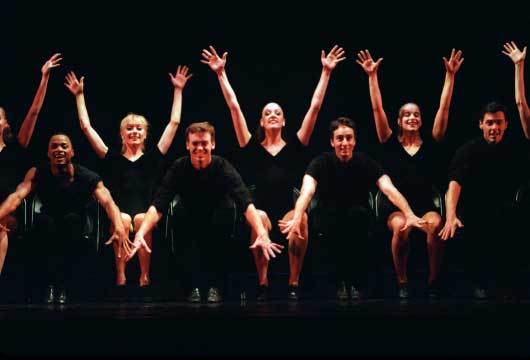
In 1999, two world premieres also emphasizing live music take the KCB stage: Lila York’s Gloria showcases the Kansas City Symphony Chorus with the Kansas City Symphony Ballet Orchestra and Ann Reinking’s Suite Kander includes a six-musician band on stage.
Reach Out And Dance (R.O.A.D.) begins as a pilot outreach dance in schools project in 1999-2000.
In January 2000, after nearly 15 years as the State Ballet of Missouri, the Kansas City Ballet reclaims its original name.
In 2000, Bolender’s reconstruction of the “lost” Balanchine ballet, Renard, is performed in Kansas City and New York City for the Balanchine centennial.
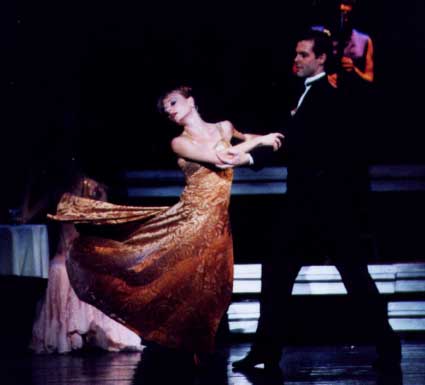
In October 2000 Whitener co-choreographs On the Boulevard with Tharp colleague Shelley Freydont. The dancers perform alongside the Boulevard Big Band with Grammy-nominated guest vocalist Karrin Allyson.

In 2001 the company participates in Kansas City’s city-wide Stravinsky Festival. KCB presents two ballets by Balanchine, his masterpiece Agon and Renard.
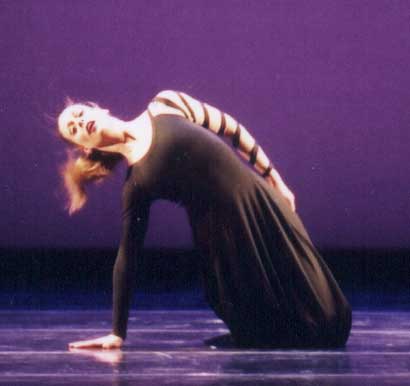
In the spring of 2002, Whitener garners national attention when he devises a program presenting six solos created by the legendary choreographers Lotte Goslar, Anna Sokolow, Merce Cunningham, Agnes de Mille, Daniel Nagrin, and Michel Fokine. Six Solos is the cover story of Dance Magazine and is featured in the New York Times.

In 2003, Whitener adds Merce Cunningham’s Duets to the repertory.
In 2005 KCB performs Twyla Tharp’s Nine Sinatra Songs as part of the “Evening Stars” dance series at Battery Park in New York City.
MidWest Youth Ballet begins residency at Kansas City Ball School in September 2005.
In 2006, KCB announces plans to renovate the old Power House building at Union Station as their new permanent home.
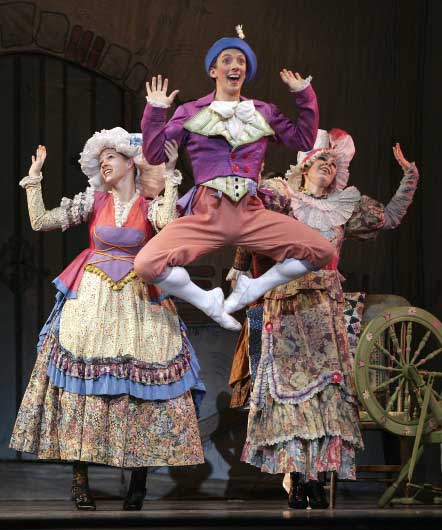
In 2006 Whitener adds the story ballet La Fille mal Gardée to the repertory and presents a second series of solo dances by master choreographers, Six Solos of Consequence II.
Ramona Pansegrau joins KCB as first music director in October 2006.
In January 2007, KCB moves to 1616 Broadway renovated from a former’s ladies apparel wholesale warehouse.
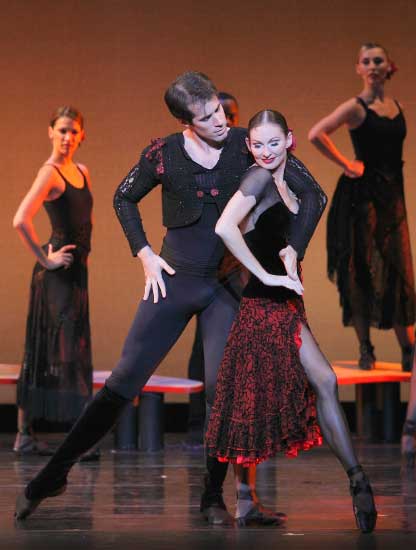
In May 2007 Carmen, choreographed by Whitener, breaks all box-office records for any KCB repertory show.
In May 2007, KCB School performs its spring performance at the Folly Theater.
KCB has record breaking subscription ticket sales for the 2006-2007 season with more than 4,200 subscribers.

Kansas City Ballet makes its debuts with the Joyce Theatre in New York City March 11-16, 2008, and the John F. Kennedy Center for the Performing Arts in Washington, D.C., June 12 & 14, 2008.
In 2008, Whitener adds Tharp’s Brahms Paganini to the repertory. World premieres by Donald McKayle and Whitener are created for the company’s 50th anniversary. Ib Andersen’s Romeo & Juliet performs an extended run at the Music Hall.
In 2009, Whitener adds Yuri Possokhov’s Firebird, a world premiere by Karole Armitage and Jessica Lang’s Splendid Isolation III to the repertory.
Christopher Barksdale retires in May 2009 after an illustrious 21-year career as a dancer with the company, having begun his training on scholarship at the Kansas City Ballet School.
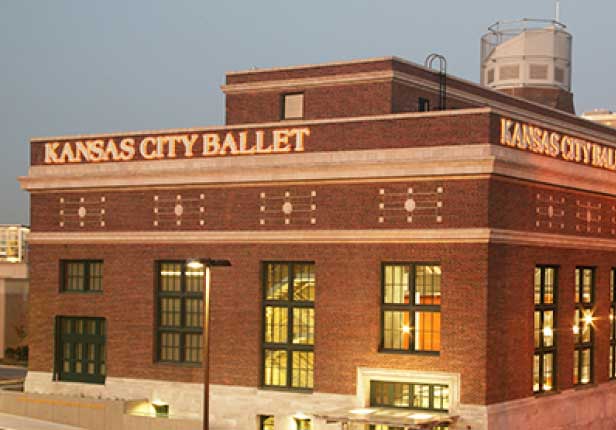
The Todd Bolender Center for Dance & Creativity becomes the permanent home of Kansas City Ballet in August 2011.
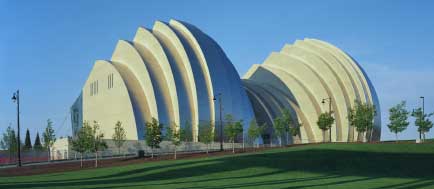
In October 2011, Kansas City Ballet makes its debut as the resident dance company of the Kauffman Center for the Performing Arts with William Whitener’s Tom Sawyer – A Ballet in 3 Acts.
Dancer Kimberly Cowen retires in May 2012 following a stellar 20-year career with the company.
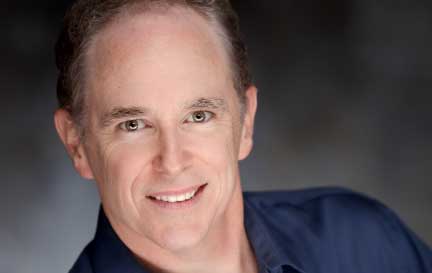
In 2013 Devon Carney is selected as the new KCB artistic director.
Carney quickly establishes a second company comprised of emerging professional dancers (KCB II and Trainees).

In February 2014, Michael Pink’s Dracula breaks all box office records for any KCB repertory show.
In March 2014, the New Moves annual project becomes a stage for young choreographers to test their mettle in programs devoted to completely new choreography.
Grace Holmes takes charge of the Kansas City Ballet School in July 2014.
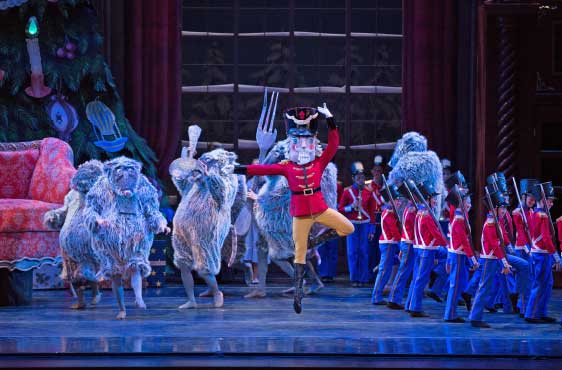
KCB unveils the world premiere of Artistic Director Devon Carney’s production of The Nutcracker in December 2015 to great acclaim.
With over 95% sold to capacity and $2.56M in sales, The Nutcracker smashes records and 34,600 people of all ages attend, marking it as the highest attended production.
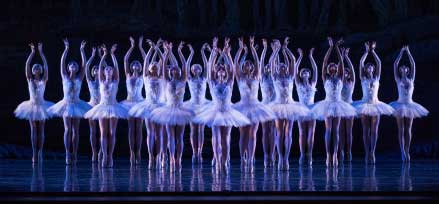
In February 2016, Carney adds his full-length Swan Lake to KCB’s repertory and breaks repertory sales records.
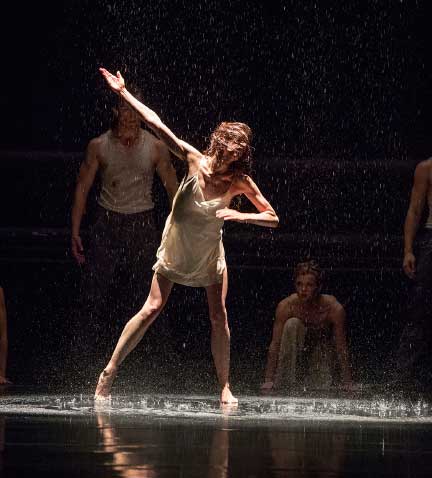
In May 2016, Carney adds four works to KCB’s repertory; Viktor Plotnikov’s new work Vesna, Yuri Possokhov’s Diving into the Lilacs, Helen Pickett’s Petal and Adam Hougland’s Rite of Spring.

KCB presents the renowned fairy tale The Sleeping Beauty, choreography by Carney, for the first time ever in March 2017.
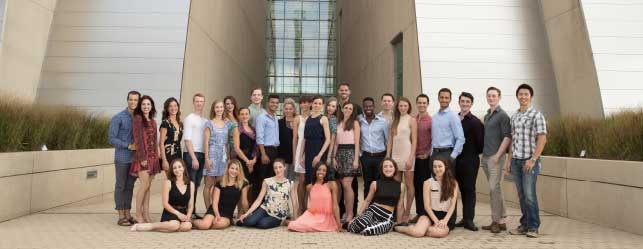
In the 2016-2017 season, KCB grows to an all-time high with 30 dancers, 6 KCB II dancers and 9 trainees; 64 full-time and part-time staff, and 450 volunteers who invest 12,500 hours annually.
KCB hosts Dance/USA’s 9th Annual Conference in June 2017, bringing dance professionals from all over the country to KC.
As part of KCB’s 60th anniversary, the Company travels to the John F. Kennedy Center in Washington D.C., to premiere Carney’s The Nutcracker in November 2017.